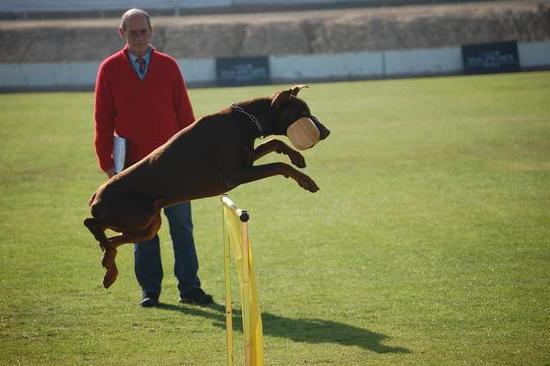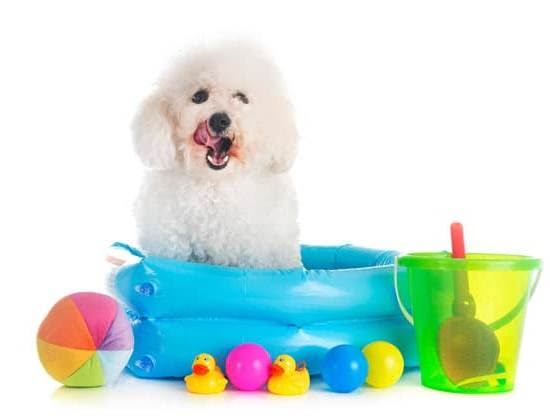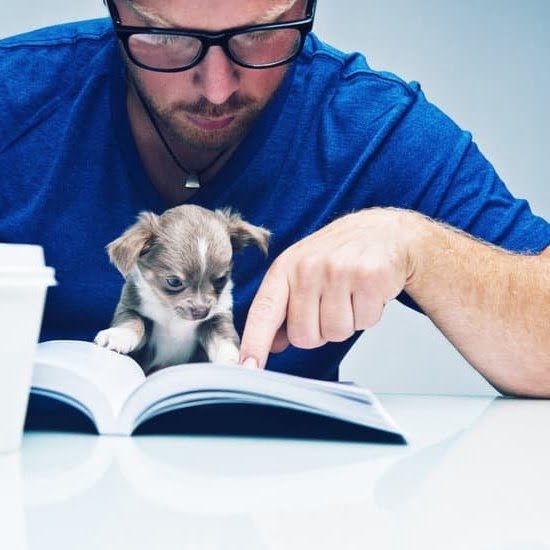Training a service dog to ignore people is a crucial aspect of their preparation for assisting individuals with disabilities. Service dogs play a vital role in enhancing the quality of life for their handlers, and being able to maintain focus amidst distractions is essential for their effectiveness. By learning how to ignore people when necessary, service dogs can better perform their duties and provide the support needed by their handlers.
The ability to disregard external stimuli such as people allows service dogs to concentrate on their handler’s needs without getting sidetracked. This skill is particularly important in busy public settings where there may be numerous distractions vying for the dog’s attention. Through focused training and consistent reinforcement, service dogs can develop the discipline to stay focused on their tasks while filtering out irrelevant interactions with others.
In this article, we will delve into the process of training a service dog to ignore people, exploring various techniques and methods that can help enhance their ability to remain attentive and responsive in different environments. From understanding the role of a service dog to advanced training methods, we will uncover valuable insights into preparing these remarkable animals for their life-changing work.
Understanding the Role of a Service Dog
A service dog plays a crucial role in assisting individuals with disabilities to navigate their daily lives with greater independence and confidence. These highly trained canines are more than just pets; they are valuable companions that provide essential aid and support to their handlers.
Service dogs are specifically trained to perform a variety of tasks tailored to meet the unique needs of each individual they serve. Whether it is guiding the visually impaired, alerting those with hearing impairments, or providing emotional support to individuals with mental health conditions, service dogs play an integral part in enhancing the quality of life for their handlers.
Defining What a Service Dog Is
Service dogs are not just regular pets; they undergo extensive training to assist individuals with disabilities in various capacities. These dogs are considered working animals rather than pets due to their specialized training and ability to perform specific tasks. They are protected under the Americans with Disabilities Act (ADA) and have legal rights to accompany their handlers in public places where pets may typically be prohibited.
The Purpose of a Service Dog
The primary purpose of a service dog is to provide assistance and support to individuals with physical or mental disabilities. These dogs help mitigate the effects of their handler’s disability by performing tasks that enable greater independence and improve their overall quality of life. From fetching items for wheelchair users to providing stability for those with mobility issues, service dogs play a vital role in enhancing the day-to-day functioning of individuals with disabilities.
The Different Tasks They Can Be Trained to Perform
Service dogs can be trained to perform a wide range of tasks depending on the needs of their handler. Some common tasks include alerting for medical conditions such as seizures or low blood sugar levels, opening doors, retrieving dropped items, guiding individuals through crowded spaces, providing balance support, and even interrupting self-harming behaviors in those with mental health conditions. The versatility and intelligence of these remarkable animals make them indispensable partners for individuals living with disabilities.
Selecting the Right Dog
Moreover, the temperament of the dog plays a significant role in their suitability for service dog training. Service dogs need to be calm, obedient, and able to focus on their handler amidst distractions. It’s essential to select a dog with a temperament that aligns with these requirements. Temperament testing can be useful in evaluating a dog’s traits and determining if they have the right qualities needed for service work.
In addition to breed and temperament considerations, it’s also important to assess the individual personality of each dog. Each dog is unique, and what works for one may not work for another. Taking the time to get to know the potential service dog candidates on an individual level can provide valuable insights into their strengths, weaknesses, and suitability for the specific task of learning how to ignore people when necessary.
| Aspect | Importance |
|---|---|
| Breed Characterisitics | Some breeds are more trainable than others |
| Temperament Testing | Evaluates if a dog has necessary traits for service work |
| Individual Personality Assessment | Determines suitability based on unique qualities |
Basic Obedience Training
Teaching Basic Commands
Before a service dog can learn to ignore people, they must first master basic obedience commands. These commands include sit, stay, come, down, and heel. Teaching these fundamental commands helps create a solid foundation for more advanced training later on. Consistency is key when teaching these commands – practice regularly in various environments to ensure the dog’s understanding and compliance.
Building Focus and Engagement
In addition to basic commands, it is crucial to work on building focus and engagement with the handler. This can be achieved by using positive reinforcement techniques such as treats or toys to encourage the dog to pay attention and respond to cues promptly. Engaging activities like play sessions or training games can also help strengthen the bond between the handler and the service dog, improving their overall communication.
Proofing Behaviors in Different Environments
One of the essential aspects of basic obedience training for a service dog is proofing behaviors in various environments. This means practicing commands in different settings with distractions present to ensure that the dog can follow through regardless of the circumstances.
By gradually increasing the level of difficulty during training sessions, the service dog will grow accustomed to focusing on their handler despite external stimuli. This step is crucial before moving on to advanced training methods focused on ignoring people while out in public settings.
Socialization Techniques
When it comes to training a service dog to ignore people, proper socialization techniques play a crucial role. Socializing a service dog involves exposing them to various environments, different types of people, and other animals while reinforcing their focus on their handler. This process helps the service dog adapt to different situations and remain attentive in public settings. To achieve this, you can start by gradually introducing your service dog to new environments such as parks, malls, or busy streets.
One effective way to socialize a service dog is through controlled interactions with people. It’s essential to expose the dog to individuals of different genders, ages, and appearances while encouraging them to remain focused on you as their handler.
By incorporating basic commands like “sit” or “stay” during these encounters, you can reinforce the importance of listening to your cues even in distracting situations. Remember that positive reinforcement is key during socialization training – using treats or praise when your service dog successfully ignores irrelevant stimuli can help solidify their training.
Another crucial aspect of socialization for service dogs is desensitizing them to loud noises, sudden movements, or unfamiliar objects they may encounter in public places. Gradually exposing your dog to these stimuli while rewarding calm behavior can help them build confidence and remain composed in challenging situations. By incorporating these socialization techniques into your training routine consistently and patiently, you can increase your service dog’s ability to ignore people and focus on their duties effectively.
| Socialization Tips Summary | Key Takeaways |
|---|---|
| Expose the service dog gradually: Introduce new environments and interactions slowly. | Positive reinforcement is vital: Use treats and praise for desired behavior. |
| Controlled interactions with different individuals: Encourage focus on the handler during encounters. | Desensitize them effectively: Expose the dog to varying stimuli for confidence-building |
Distraction Training
Training a service dog to ignore people is an essential aspect of their overall training. Distractions can often be abundant in public settings, and it is crucial for a service dog to remain focused on their handler at all times. By implementing distraction training techniques, you can help your service dog stay on task and perform their duties effectively.
To successfully train a service dog to ignore people, it is important to start with basic obedience commands. This foundation will provide the groundwork for advanced training later on. Here are some strategies to gradually introduce distractions during training sessions:
- Begin in a controlled environment with minimal distractions and focus on reinforcing the desired behavior.
- Slowly increase the level of distractions by adding background noise, movement, or other stimuli.
- Practice redirection techniques to refocus your service dog’s attention back to you when they become distracted by people.
Consistency is key when implementing distraction training. It is important to reinforce the behavior you want from your service dog consistently and patiently. Remember that each dog learns at their own pace, so be patient and continue practicing regularly. With time and dedication, your service dog will learn how to ignore people effectively while remaining focused on their tasks.
Advanced Training Methods
When it comes to training a service dog to ignore people in public settings, advanced training methods are crucial for ensuring their focus and obedience. One effective technique is desensitization, which involves exposing the dog to controlled scenarios with increasing levels of distractions while teaching them to maintain their attention on their handler. This can include having strangers walk by or approach the dog while practicing commands, gradually building up their ability to resist the temptation of interacting with others.
Another method that can be utilized is positive reinforcement training. By rewarding the service dog with treats, praise, or toys when they successfully ignore people in public, they learn that exhibiting this behavior leads to positive outcomes. Consistency is key in reinforcing this desired behavior, as frequent practice and reinforcement help solidify the training concepts in the dog’s mind.
Moreover, implementing redirection techniques can also aid in strengthening the service dog’s ability to resist interacting with people. For example, if the dog starts showing interest in approaching someone, redirecting their attention back to their handler through commands or cues can help reinforce the expectation of ignoring distractions.
Additionally, incorporating regular exposure to various environments and situations where people may be present helps the service dog generalize their training across different contexts. Through patience, consistency, and employing these advanced training methods, service dogs can effectively learn how to ignore people in public settings while focusing on their important tasks and responsibilities.
Consistency and Patience
Training a service dog to ignore people is a crucial aspect of their development and the overall effectiveness of their assistance. Consistency and patience are key elements in this process, ensuring that the dog maintains focus on their handler even in stimulating environments. By consistently reinforcing the desired behavior and remaining patient throughout the training journey, you can help your service dog reach their full potential.
Consistent training involves setting clear expectations for your service dog and following through with regular practice sessions. Repetition is essential in reinforcing the behaviors you want to instill in your dog, such as ignoring distractions and focusing on their task at hand.
Patience plays a vital role in allowing your service dog to progress at their own pace, as each dog learns differently and may require more time to master certain skills. By remaining patient and understanding towards your dog’s learning process, you can create a positive training environment that encourages growth and success.
Ultimately, the bond between a service dog and their handler is strengthened through consistent training and patience. By investing time and effort into teaching your service dog how to ignore people effectively, you are ensuring that they can perform their tasks reliably in various situations.
Remember that every step forward, no matter how small, is a significant achievement in the training process. With dedication, perseverance, and a focus on consistency and patience, you can successfully train your service dog to ignore people while enhancing their abilities as an invaluable companion.
Frequently Asked Questions
How Do You Train a Service Dog to Ignore Others?
Training a service dog to ignore others involves consistent reinforcement of focus on their owner or handler. This can be achieved through positive reinforcement whenever the dog ignores distractions and remains focused on their task.
How Do You Train a Dog That Ignores You?
If a dog is ignoring its owner during training, it is important to assess the reason behind this behavior. It could be due to lack of motivation, inconsistent training, or even health issues. By addressing these underlying causes and using positive reinforcement techniques, the dog’s attention can be redirected effectively.
Can You Train a Dog to Ignore Other Dogs?
Yes, dogs can be trained to ignore other dogs through socialization and obedience training. It involves teaching the dog commands like “look at me” or “leave it” to redirect their attention from other dogs. Consistent practice in various environments is key to success in this training endeavor.

Welcome to the blog! I am a professional dog trainer and have been working with dogs for many years. In this blog, I will be discussing various topics related to dog training, including tips, tricks, and advice. I hope you find this information helpful and informative. Thanks for reading!





